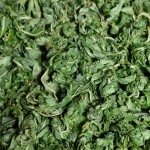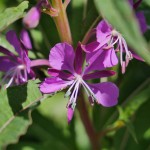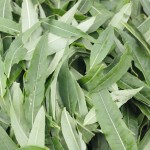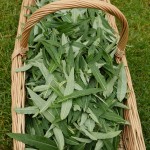Rosebay Willowherb
Common Name: Rosebay willowherb , Fireweed , Railway chrysanthemum, Bombsite weed, Poor man’s asparagus
Scientific Name: Chamerion angustifolium
Description
Rosebay Willowherb is a tall straight plant that can grow to 5-6 foot in height. It has leaves that are green and long and lanceolate. The flowers are pink. It has long red seed pods that when open disperse fluffy haired seeds that can be blow on the wind and travel a very long distance to recolonise a new area, all growing on its red coloured stem.
Habitat
It can be found growing along woodland edges, railway lines, roadsides, field edges, disturbed soil and waste ground, on the site of old fires and burn sites.
Uses
The young leaves can be used as a salad green, added to cooked dishes or made into a tonic tea called Koporye tea. The young plant stems can be harvested and used, cooked like an asparagus with butter and salt and pepper. The inner part of the stem can be removed and eaten, and flowers added to a salad for decoration or frozen in an ice cube tray as a beautiful addition to a cocktail.
Medicinal
This plant has a vast array of medicinal benefits and it contains high amounts of vitamin A and C. Natural tannin in the plant are great for your skin and help to slow down the aging process. This plant is good for treating colds and helps to detoxify the body. For more health benefits see Koporye tea recipe link
Disclaimer: You must not rely on the information on this website as an alternative to medical advice from your doctor or other professional healthcare provider. If you have any specific questions about any medical matter, you should firstly consult your doctor or other professional healthcare provider.
Other Facts
As one of its common names implies Willowherb will grow from burn sites and its fluffy cotton like seeds have been used for catching sparks and making fires in outdoor bush craft environments. It was one of the first plants to grow from bomb sites during the war often filling people with suspicion, they thought it was sent over by the German’s in the bombs. Though this was due to the seeds lying dormant in the soil for years and then then soil being disturbed, encouraging the plant to grow.




